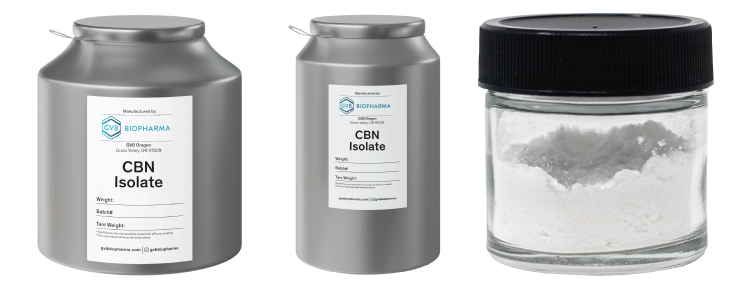
Photos courtesy of GVB Biopharma.
There are at least 113 cannabinoids in cannabis.
Many of these cannabinoids have never been fully characterized (their chemical makeup has not yet been determined), and many others are found only in trace amounts, or only in specific plant strains.
Many deem most of these un-characterized cannabinoids as the new cannabinoids. Two of the new cannabinoids that consumers need to know more about are CBC and CBN.
Cannabis is a wonder plant. Growing wild throughout the world for thousands of years, humans have used it to create textiles and ropes that become stronger when wet; as well as a host of medicines and other products including paper, paint, rope, fuel oils, and more.
In recent decades it has gained much notoriety for its recreational and wellness uses, especially the non-psychoactive cannabinoid, CBD.
Why is CBN the Next big Player in the Cannabinoid Industry?
CBN is one of many non-psychoactive cannabinoids present in cannabis. It was considered to be an inert cannabinoid until it was shown that CBN does have some activity at the CB1 receptor (like the psychoactive cannabinoid THC). It may even serve as a precursor for psychoactive cannabinoid synthesis (Bouaboula et al., 2008). However, it works more like a CB2 receptor antagonist and has analgesic effects that are like a psychoactive cannabinoid.
CBN works synergistically with psychoactive cannabinoids to produce anti-inflammatory effects. However, it is less potent than psychoactive cannabinoids alone. Additionally, CBN also seems to reduce adverse reactions such as nausea and vomiting associated with cancer therapies.
The future of CBN is not so certain. More research is needed to determine if there are medicinal uses for CBN. GVB Biopharma is an excellent option for those that are looking for a reliable white label manufacturer and high-quality products.
The Future of CBC
CBC was once simply considered a by-product of cannabis’ psychoactive cannabinoid production. But research is now showing that it may be the other way around.
This means that CBC may be the more “natural” cannabinoid (or the first cannabinoid produced in nature) and may have medical uses. Some research has also shown that CBC and psychoactive cannabinoids have an antagonistic relationship. This means that if CBC is present in an organism, it can reduce the effects of psychoactive cannabinoids.
The Future of Hemp Biomass
Hemp biomass is the waste that hemp cultivators leave after they extract their CBD from hemp flowers. Put simply, it is the hemp plant matter other than the flowers, which includes the seeds, leaves, and stalks.
For those who have ever heard of hemp seed oil, it is one of the practical examples of where hemp biomass (hemp seeds) can be used.
Hemp biomass certainly holds a bright future, especially now that hemp seed oil is trending for supplementation uses.
In the foreseeable future, hemp biomass will also continue to create biofuel. After pressing hemp seed oil, it creates biodiesel that power automobiles. Lastly, when hemp stalks get fermented, they can be used for manufacturing hemp methanol and ethanol.



Leave a Reply